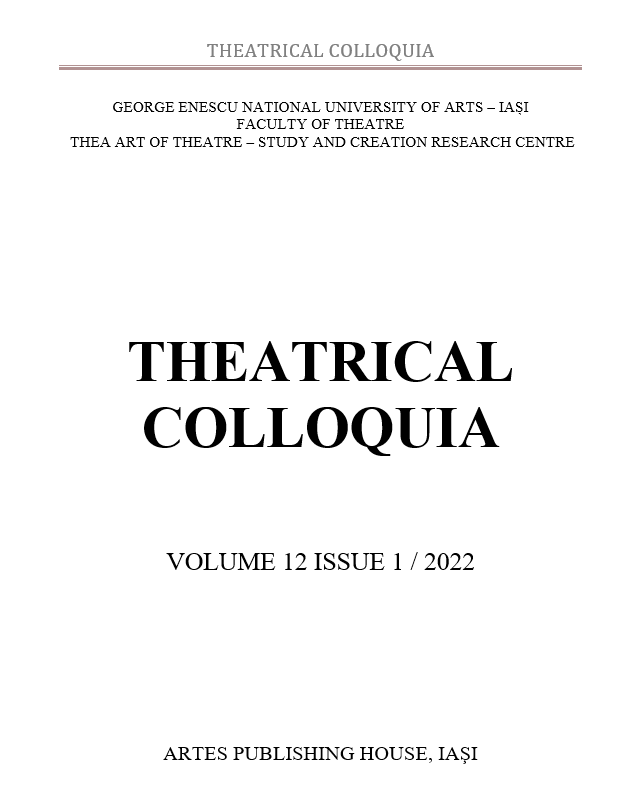Emerging Theatre Practices – The Golden Myth of European Theatrical Thought
Emerging Theatre Practices – The Golden Myth of European Theatrical Thought
Author(s): Marius-Alexandru TeodorescuSubject(s): Theatre, Dance, Performing Arts, Fine Arts / Performing Arts
Published by: Editura ARTES
Keywords: theatre; performance; Romania; contemporary; current;
Summary/Abstract: The purpose of this study is to reveal the major gap that exists between the national or global literature about theatre and the current theatrical practice. The gap is due, first of all, to the publishing trend of editors that tend to print books written by absolutely exceptional creators. We start from the premise that emerging theatre must not only distance itself from a theatrical phenomenon perceived as traditional, but must also become an artistic current that expands and becomes in turn, in time, a "norm" in itself. Thus, at a time when performances by Peter Brook, Jerzy Grotowksi, Eugenio Barba and Tadeusz Kantor were seen by theatre critics as emerging performances, theatrical practice in the next decades in European theatres shows us that these directors were creating a rather unique, experimental kind of productions. Laboratory theatre, based on long research, remains a marginal component in Western theatrical practice, where repertoire theatre, with its increasingly shorter production times, remains an absolute norm. However, the paradox remains that these show creators are homaged by the specialty literature, and rightly so, although the same does not happen with "normal" theatre directors. Theatrical theory loves exceptions too much, and the story that we are told about theatre in the late twentieth century, full of great theatrical experiments, is a false one, detached from 90% of the artistic practice. In contrast, Robert Wilson and the shows he directs constitute a completely different story. Many contemporary theatre practitioners claim to be influenced by his aesthetics, including Pippo Delbono, Romeo Castellucci or Thomas Ostermeyer. He practiced a once marginal theatrical style, but which gave birth to a strong aesthetic heritage. Therefore, this article aims to make the historical differentiation between emerging theatre and exceptional theatre, but also to identify in the contemporary Romanian performative arts the real features of the emerging theatre.
Journal: Colocvii teatrale
- Issue Year: 12/2022
- Issue No: 1
- Page Range: 177-185
- Page Count: 9
- Language: English

